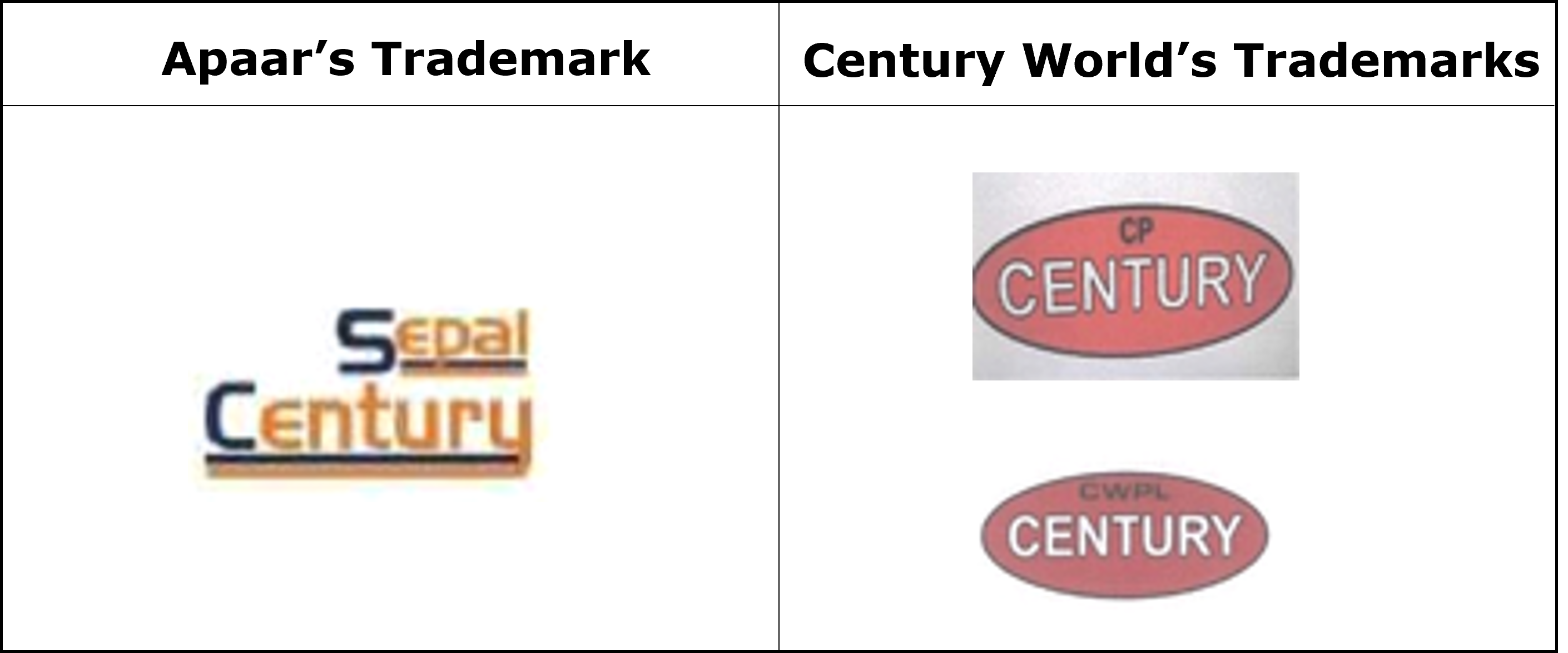Delhi High Court holds ‘Century’ is not descriptive of Kitchenware
The Division Bench (Two Judge Bench) of the Delhi High Court recently held that Common dictionary words may also acquire secondary meaning and serve as a source identifier. The Division Bench made the ruling in an Appeal filed against the order of the Single Judge where parties were at loggerheads over the use of the word CENTURY in relation to Hardware Goods, Kitchen Hardware, and Cabinet Hardware, including Lock of Metal, Nuts, Bolts, etc. The manner of representation of both party’s marks is depicted below:

The Plaintiff, Century World sought a restraining order against the Defendant, Apaar Homez Mart Private Limited (Apaar) from using the mark ‘SEPAL CENTURY’ or any other deceptively similar mark containing the word ‘CENTURY’ in relation to their business. The District Court ruled in favour of Century World, and Apar has filed this Appeal assailing the trial Court’s order on two main grounds, amongst others.
- Century World cannot monopolise the word ‘Century’ as it is a common dictionary word/generic word.
- The device mark used by Apaar is distinctive from the trademarks of Century World, and thus, the customers could distinguish between the products offered by the parties.
FACTS
Century World, in the suit, contended:
- They are engaged in manufacturing and marketing all kinds of Hardware Goods, Kitchen Hardware and Cabinet Hardware including Lock of Metal, Nuts, Bolts, etc.
- They are using the registered trademarks marks
 and
and  in respect of the goods manufactured and sold by them.
in respect of the goods manufactured and sold by them. - On account of extensive use and quality control, the goods under its trademark/label have acquired vast reputation and goodwill amongst the public and members of trade and are exclusively associated with them.
- Apaar is using the mark/label/packaging/trade dress ‘SEPAL CENTURY’ in relation to same products, which is identical/deceptively similar to ‘CP CENTURY’ and ‘CWPL CENTURY’
Apaar counters the contentions on the following:
- The term ‘Century’ is a generic word used by various companies for products falling under Classes 6, 21, and 35.
- Century World cannot have an exclusive right over the use of the mark CENTURY as it is a common dictionary word.
- The marks ‘CP Century’ and ‘CWPL Century,’ when compared as a whole, are different from ‘SEPAL CENTURY,’ and the font and style used by the parties in their device marks were distinctive. There is no chance of confusion.
The Division Bench held:
- Admittedly, Century World does not have registration for the word mark ‘CENTURY’ per se and has registrations for the device marks, which includes the word ‘Century’ as a prominent feature. Common dictionary words may also acquire secondary meaning and serve as a source identifier. However, whether the word ‘Century’ has acquired a secondary meaning is a matter of evidence.
- The word ‘CENTURY’ is neither descriptive nor has any nexus with the goods for which it is used, that is, the trade of modular kitchen hardware, wire baskets, hinges, locks etc.
- Apaar’s use of the trademark ‘Sepal Century’ is likely to confuse consumers with regard to the origin of goods.
- On comparison of the rival trademarks, it is evident that the word ‘Century’ forms a prominent part. The trademark representation shows that the word ‘Sepal’ is in a smaller font than the word ‘Century’. Moreover, the Single Judge had also observed ‘CPWL’ is phonetically similar to ‘Sepal’; thus, prima facie, adoption of the said mark was dishonest.
- Apaar has not been able to provide a plausible reason for including the word ‘Century’ in its trademark. Thus, the argument that it is adopted to benefit from Century World’s goodwill and reputation has merits.
- There is no reason to find that the trial Court has exercised its discretion arbitrarily, capriciously, or perversely or has ignored the settled principles of law that require interference.
In light of the above findings, the Division Bench dismissed the appeal filed by Apaar and upheld the preliminary injunction order passed by the District court.



